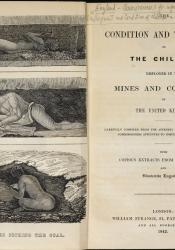Palace of Westminster
Home of Parliament, meeting place of the "brothers" EBB addresses at the start of "The Cry of the Children," demanding that they attend to the horrific laboring conditions endured by children in English mines and factories: "Do ye hear the children weeping, O my brothers?" EBB read about these child laborers in widely publicized reports issued in 1842 and 1843 by the Parliamentary Children's Employment Commission.
Coordinates
Latitude: 51.499479400000
Longitude: -0.124809200000
Longitude: -0.124809200000


